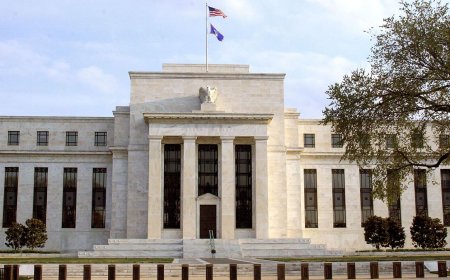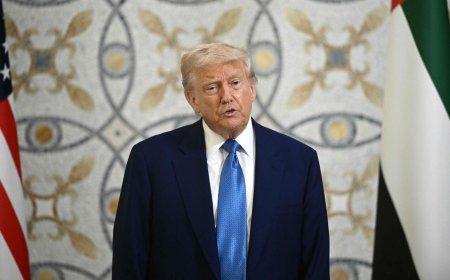US-China Trade Truce Brings Global Relief, But Shrinks India's Tariff Edge
The recent US-China trade truce has eased global tensions, but for India, the narrowing tariff gap may reduce its export competitiveness. Explore the implications and strategic shifts ahead.

US-China Trade Truce Brings Relief, but India's Tariff Advantage May Narrow
Introduction: A Welcome Pause in a Global Storm
The long-drawn US-China trade war has finally taken a pause, bringing a sigh of relief across the global economic landscape. In what has been dubbed a "mini-deal" or a "truce," the two largest economies in the world have agreed to ease tariffs and resume structured negotiations. While global markets cheered the development, for India, the implications are more nuanced. As the smoke clears, a new concern looms: India’s previously strong tariff advantage in global exports might be at risk.
For years, Indian exporters benefited indirectly from the US-China tariff conflict. As US tariffs made Chinese goods less competitive in American markets, buyers looked to Indian suppliers as alternatives. But now, with tariff barriers softening, that competitive edge may begin to diminish. India must recalibrate its trade strategy to safeguard its export performance.
Section 1: Overview of the US-China Trade Truce
1.1 Background of the Trade War
The trade tensions between the United States and China began escalating in 2018 under the Trump administration. Accusations of unfair trade practices, intellectual property theft, and a massive trade deficit with China prompted the US to impose sweeping tariffs on billions of dollars’ worth of Chinese goods. China retaliated, and the tit-for-tat cycle led to a full-fledged trade war, sending shockwaves through global supply chains.
1.2 The New Agreement
The new truce includes the following key elements:
-
Partial rollback of tariffs by both countries
-
China agreeing to increase imports of US goods, especially agricultural and energy products
-
Renewed bilateral talks on structural issues, including intellectual property and technology transfers
While it’s not a comprehensive resolution, the truce has calmed nerves globally, restored market confidence, and opened doors for renewed engagement.
Section 2: How India Benefited During the Trade War
2.1 Export Substitution Opportunities
During the peak of the trade war, Indian exporters gained traction in segments like:
-
Textiles and apparel
-
Chemicals and pharmaceuticals
-
Engineering goods
-
Auto components
-
Information technology hardware
With Chinese goods becoming costlier in the US due to tariffs, many American businesses turned to India to meet their sourcing needs.
2.2 Rise in Global Trade Inquiries
Indian trade associations recorded a noticeable increase in inquiries from global buyers. While some were temporary substitutions, others led to long-term contracts. India’s participation in global supply chains subtly increased during this period.
2.3 Strategic Partnerships Strengthened
India signed or advanced several trade and investment agreements with countries looking to reduce dependency on China. The Australia-India Economic Cooperation and Trade Agreement (AI-ECTA), and the renewed Indo-Pacific dialogues with the US, Japan, and ASEAN nations were key developments.
Section 3: Why India’s Tariff Advantage May Now Shrink
3.1 Easing Tariffs Re-levels the Field
As the US reduces tariffs on Chinese imports, price competitiveness will once again tilt toward China due to its unmatched manufacturing scale and logistics efficiency. Indian goods that gained a foothold in the US market during the tariff war may now face renewed competition.
3.2 Fragile Cost Competitiveness
India’s cost of production in many sectors is still higher than China’s due to:
-
Infrastructure bottlenecks
-
Higher energy and logistics costs
-
Bureaucratic hurdles
-
Inconsistent quality standards
The artificial advantage India enjoyed during the trade war may fade quickly if structural inefficiencies persist.
3.3 Currency & Policy Risk
The Chinese yuan is tightly managed, whereas the Indian rupee remains susceptible to volatility. As trade resumes between the US and China, currency policy differences may also impact competitiveness. In addition, India’s tariff and non-tariff barriers have come under increasing scrutiny by WTO members.
Section 4: How India Can Sustain Its Export Momentum
4.1 Focusing on Quality and Value-Addition
India must move away from low-cost competition and instead focus on:
-
High-quality manufacturing
-
Design and innovation
-
Research & Development (R&D)
The success of the Indian pharmaceutical and software services industry shows that quality-based exports can thrive despite global competition.
4.2 Leveraging the China Plus One Strategy
Global firms are still looking to diversify supply chains away from China. India remains a natural choice under the "China Plus One" strategy. To benefit fully, India must:
-
Improve ease of doing business
-
Streamline taxation and compliance
-
Invest in ports, roads, and digital infrastructure
4.3 Signing Strategic FTAs
India has resumed interest in free trade agreements with key markets such as:
-
European Union
-
United Kingdom
-
Canada
-
Gulf Cooperation Council (GCC)
Successful negotiations could help Indian goods remain competitive even if the US-China tariff détente holds.
4.4 Incentives and PLI Schemes
The government’s Production-Linked Incentive (PLI) schemes must continue expanding to new sectors like:
-
Green energy
-
Electronics
-
Semiconductors
-
Textiles
These schemes are already attracting investments from global giants and can be leveraged to build scale and reduce production costs.
Section 5: Implications for Policy Makers and Exporters
5.1 Time for Real Reforms, Not Just Relief
The temporary relief from a weakened China may be over. India must double down on domestic reforms that can build long-term trade competitiveness:
-
Labour law simplification
-
Faster dispute resolution
-
Policy predictability
5.2 Private Sector Must Take Initiative
Exporters should:
-
Diversify markets beyond the US
-
Invest in global certifications
-
Build supply chain resilience
-
Explore digital and e-commerce exports
Reliance on geopolitical disruptions should not be a long-term strategy.
5.3 MSMEs Need Urgent Support
India’s small and medium enterprises (MSMEs) were among the biggest beneficiaries of the US-China trade war. To ensure their survival in a normalized tariff environment, the government must:
-
Increase credit access
-
Offer export facilitation support
-
Provide targeted training programs
Section 6: Long-Term View – Trade Truces Are Temporary
6.1 Global Trade is Becoming Multipolar
While the US-China truce may hold for now, geopolitical tensions remain high. From semiconductors to EVs, both nations are fiercely competing for technological supremacy. Future flashpoints can reignite tensions at any time.
India must remain strategically agile, hedging its trade bets and building resilience into its export policy.
6.2 Technology Will Define the Next Advantage
The next wave of trade advantage will come not from tariff walls but from technology:
-
Automation in manufacturing
-
Digital trade platforms
-
Blockchain in logistics
-
AI in supply chain forecasting
India must invest heavily in these areas to maintain its global relevance.
A Wake-Up Call, Not a Setback
The US-China trade truce may close the chapter of opportunity opened by their conflict, but it should not be seen as a setback for India. Instead, it’s a wake-up call to shift from dependency on external disruption toward building internal strength.
India has the potential to be a major player in global trade, but only if it sheds the crutches of tariff advantages and embraces the rigor of structural reform, competitive efficiency, and innovation-driven exports.
The world is watching, and the stage is wide open. The truce may have ended a chapter, but for India, the story is just beginning.
What's Your Reaction?
 Like
0
Like
0
 Dislike
0
Dislike
0
 Love
0
Love
0
 Funny
0
Funny
0
 Angry
0
Angry
0
 Sad
0
Sad
0
 Wow
0
Wow
0












































































